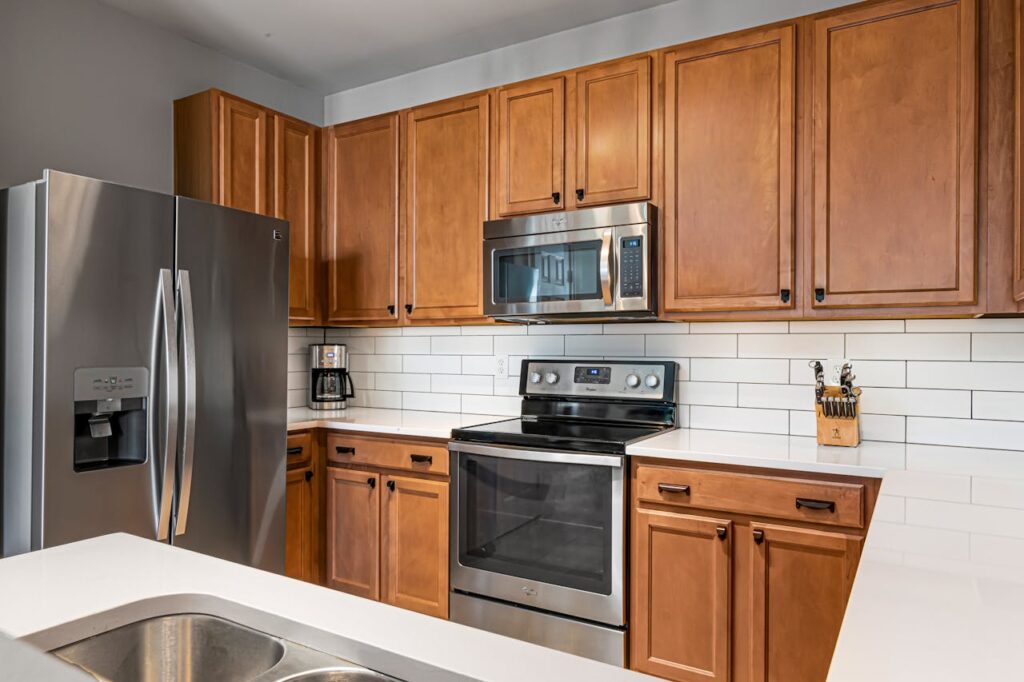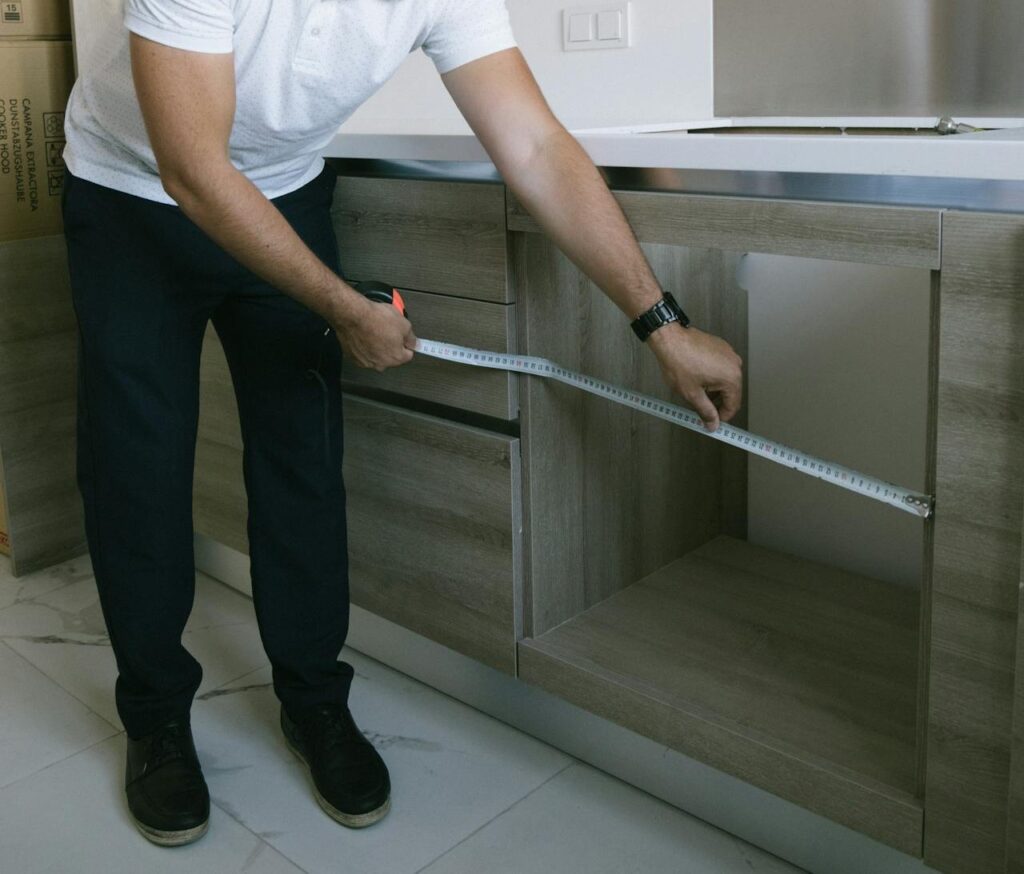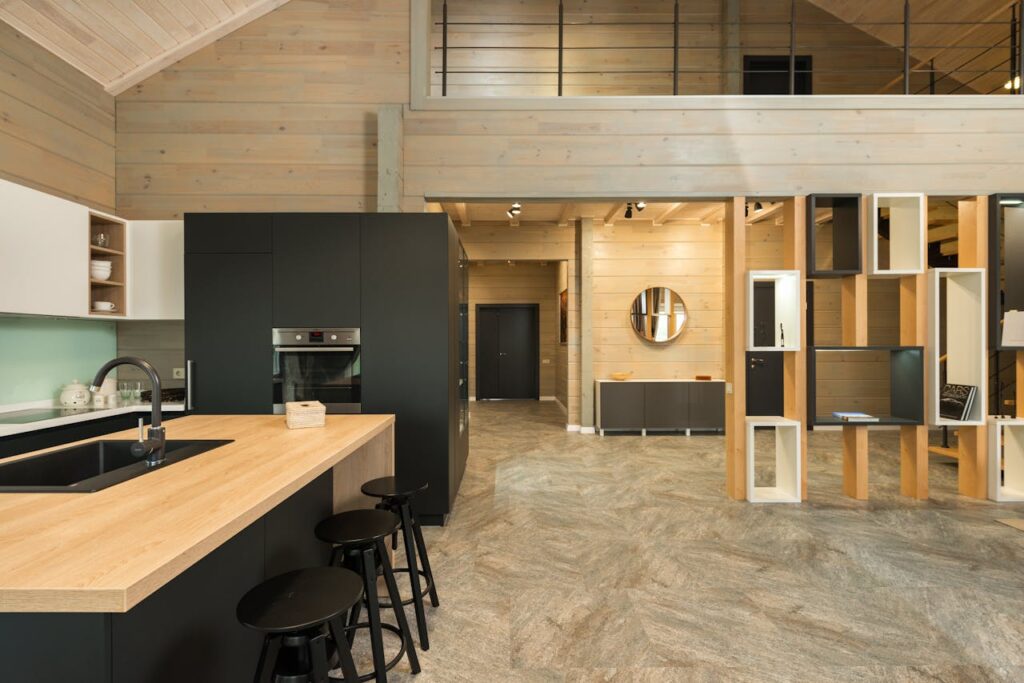When you build or upgrade a kitchen, choosing the right wood for your appliance enclosures is really important. Appliance enclosures are the boxes or cabinets that hold your microwave, toaster, or other kitchen machines. The wood you pick needs to be strong, look nice, and handle heat and moisture well.
This article goes over some of the best types of wood for these enclosures. You’ll learn which woods are easy to work with, which last a long time, and which ones fit different kitchen styles.
By the end, you’ll know how to pick the perfect wood for your kitchen appliances!
Key Takeaways
- Durability matters – Choose woods that can handle heat, moisture, and daily use without getting damaged quickly.
- Look for style – Some woods have beautiful grains and colors that match your kitchen’s design.
- Workability counts – Pick woods that are easy to cut and shape if you want to build or customize the enclosure yourself.
- Cost varies – Some woods are more expensive but last longer, while others are cheaper but may need replacing sooner.
- Finish and maintenance – The right wood will hold paint or stain well and be easy to clean and care for.
Why Wood Selection Matters for Appliance Enclosures
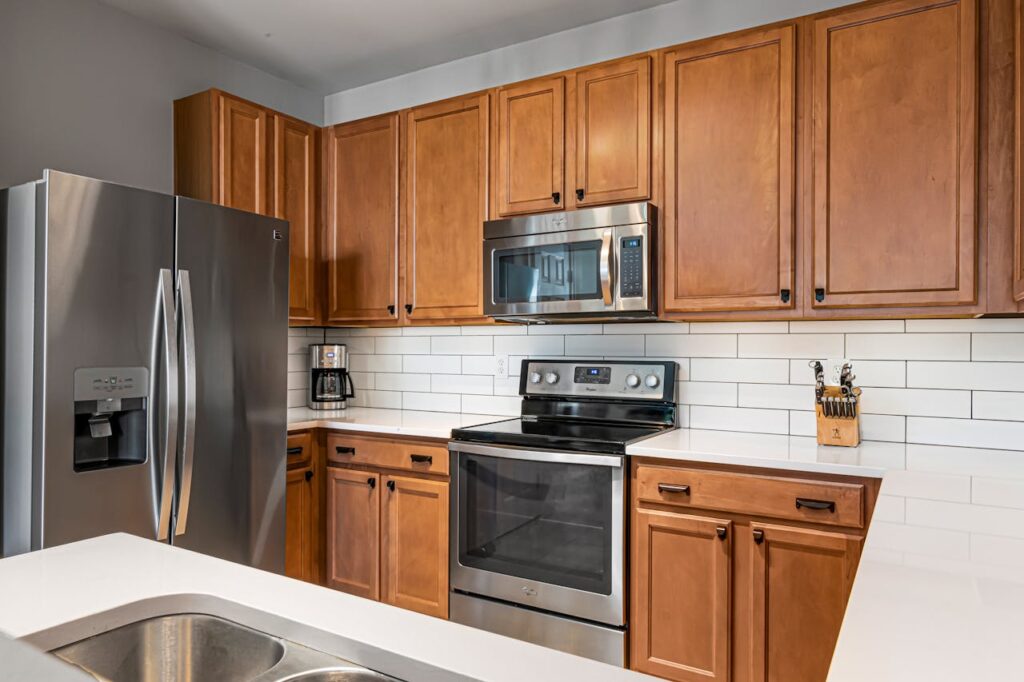
Choosing the right wood for your kitchen appliance enclosures is more than just picking a pretty color. The wood needs to do important jobs to keep your kitchen safe and looking great. First, it must be strong enough to hold the weight of appliances like microwaves or coffee makers. If the wood is too soft, it might get dents or scratches easily.
Next, the wood has to handle heat and moisture. Kitchens can be humid, and appliances can get warm. Some woods absorb moisture and swell or warp, which can ruin the enclosure. You want wood that stays steady even when the air changes.
Also, wood affects how your kitchen feels. Some woods have a smooth finish and look shiny, while others show a rougher grain. Picking the right wood helps your kitchen feel cozy or modern, depending on your style.
Finally, wood choice affects how long your enclosure lasts. Strong woods can last for many years without needing repairs. Other woods might look good at first but wear down faster.
When picking wood for appliance enclosures, keep these factors in mind:
Strength
Look for wood that can hold heavy appliances without bending or breaking. Hardwoods like oak or maple are strong and last a long time.
Resistance to Moisture and Heat
Choose wood that doesn’t absorb water easily or get damaged by heat. Woods like cherry and teak handle moisture well.
Appearance
Think about how the wood looks. Some woods have light colors, while others are darker. Some have straight grains, and others have patterns. Pick a wood that matches your kitchen’s style.
Workability
If you plan to build or customize your enclosure yourself, choose wood that is easy to cut, sand, and join. Pine is softer and easier to work with, but it’s not as strong as hardwoods.
Cost
Wood prices vary a lot. Some woods cost more but last longer. Others are cheaper but might need replacing sooner. Decide what fits your budget and how long you want the enclosure to last.
Maintenance
Some woods need special care, like regular polishing or sealing. Others are easier to clean and keep looking good with just a wipe-down.
By thinking about these factors, you’ll pick the right wood that fits your kitchen and your needs.
Best Wood Types for Appliance Enclosures
Now that we’ve talked about why wood choice matters and what to look for, let’s take a closer look at some of the best wood types you can use.
Each wood has its own strengths. Some are great for looks, while others are strong and long-lasting. Some do both!
Below, you’ll find a list of top options with simple facts to help you choose the one that fits your kitchen best
1. Maple – Smooth grain, durable, resists heat and wear.
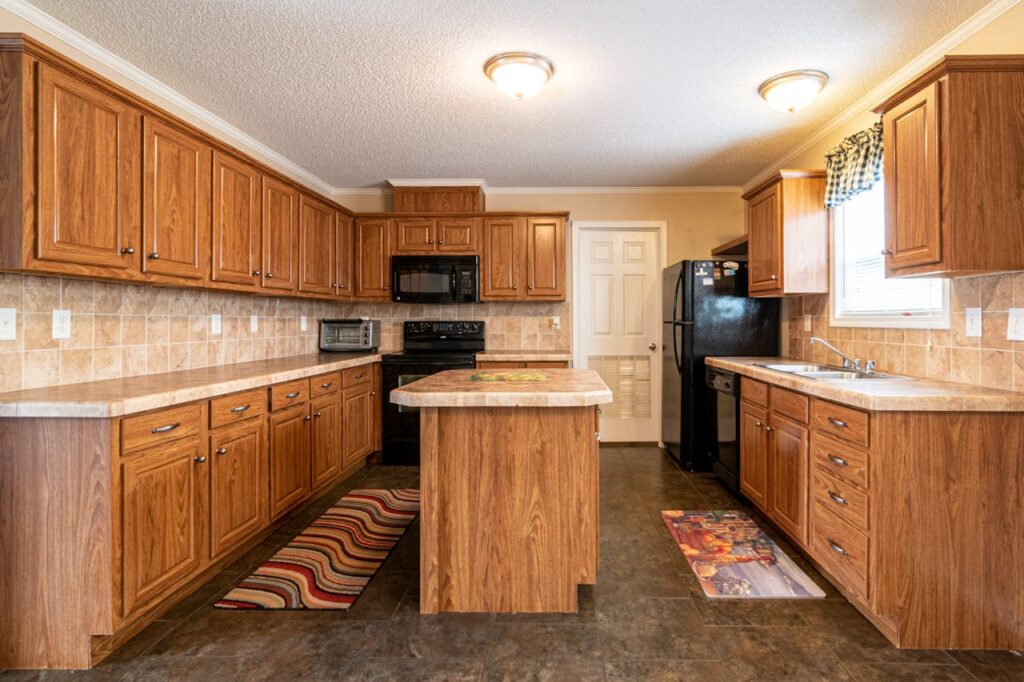
Maple is a strong choice for wood kitchen projects. It has a smooth grain pattern that looks clean and modern. Maple holds up well to heat, which makes it great for areas near ovens or microwaves. It’s also very hard, so it resists scratches and dents.
Many kitchen cabinet makers use maple because it takes paint and stain evenly, giving cabinetry a polished, finished look.
- Maple is a hardwood that doesn’t scratch easily.
- It has a fine, smooth wood grain that looks clean and simple.
- It handles heat and moisture well, perfect for busy kitchens.
- Maple is often used in high-quality wood cabinets and custom cabinet designs.
2. Oak (Red & White) – Strong, traditional, with good resilience.
Oak is one of the most common woods used in wood cabinets, especially in traditional or rustic kitchens. Both red oak and white oak are tough and long-lasting. They can take a lot of use without wearing down.
Red oak has a more noticeable grain pattern, while white oak looks smoother and more subtle. Either type brings a classic feel to your cabinetry and handles moisture well.
- Red oak has a bold grain pattern, while white oak is more smooth and subtle.
- Both types are very strong and resist damage from daily use.
- Oak is a classic choice for kitchen cabinet styles with a traditional or rustic look.
- It holds up well to wear and tear over time.
3. Cherry – Rich color, ages beautifully, moderate durability.
Cherry wood is popular for its rich, reddish color that deepens over time. It gives your wood cabinets a warm, natural wood finish. Cherry is not as hard as maple or oak, but it still works well for appliance enclosures. It’s often used in upscale cabinetry because of its elegant look.
Cherry wood also pairs nicely with walnut or birch accents if you want to mix wood styles in your kitchen.
- Cherry wood starts out reddish and darkens over time with light exposure.
- It has a soft, even grain and a warm, smooth feel.
- It’s a bit softer than maple or oak, so it may show dents more easily.
- Cherry is great for elegant cabinetry and matches well with walnut or alder.
4. Birch – Economical, stable, takes finishes well.
Birch is a smart pick if you want a clean look without spending too much. It’s a stable wood, so it holds its shape over time and resists shrinking or swelling. Birch takes paint and stain well, which makes it great for a custom cabinet project. It looks similar to maple but costs less.
You’ll often see birch used in wood grain patterns that are smooth and light-colored.
- Birch is a budget-friendly option that still looks nice.
- It holds paint and stain well, so it’s easy to match your kitchen style.
- It stays strong and stable, even in humid areas.
- Birch is often used in modern cabinetry and pairs well with poplar.
5. Walnut – Premium appearance, stable but softer.
Walnut stands out for its rich, dark color and smooth finish. It gives your cabinetry a high-quality, elegant look. It’s strong and stable, but it’s a soft wood compared to hickory or oak, so it can scratch more easily. If you don’t mind giving it a little extra care, walnut adds warmth and beauty to any kitchen.
It pairs nicely with lighter woods like poplar or alder for contrast.
- Walnut has a deep, rich brown color and smooth surface.
- It brings a high-end look to any wood kitchen.
- It is softer than hickory or oak, so it needs gentle care.
- Walnut often shows beautiful wood grain and small knots for extra character.
6. Hickory – Very hard, rustic appeal, high durability.
Hickory is one of the hardest woods you can choose. It handles heavy use and resists wear and tear very well. This makes it perfect for busy kitchens. It has a bold, rustic look, often with a mix of light and dark tones. You’ll also see knots and streaks that give it character.
If you like a wood with strong grain and a natural, rugged feel, hickory is a great match.
- Hickory is one of the hardest woods available for kitchen use.
- It resists dents, scratches, and heavy wear and tear.
- The grain is bold and uneven, giving it a strong rustic appeal.
- It often includes color variations and knots that add natural style.
7. Plywood with Veneer – Stable, cost-effective, versatile.
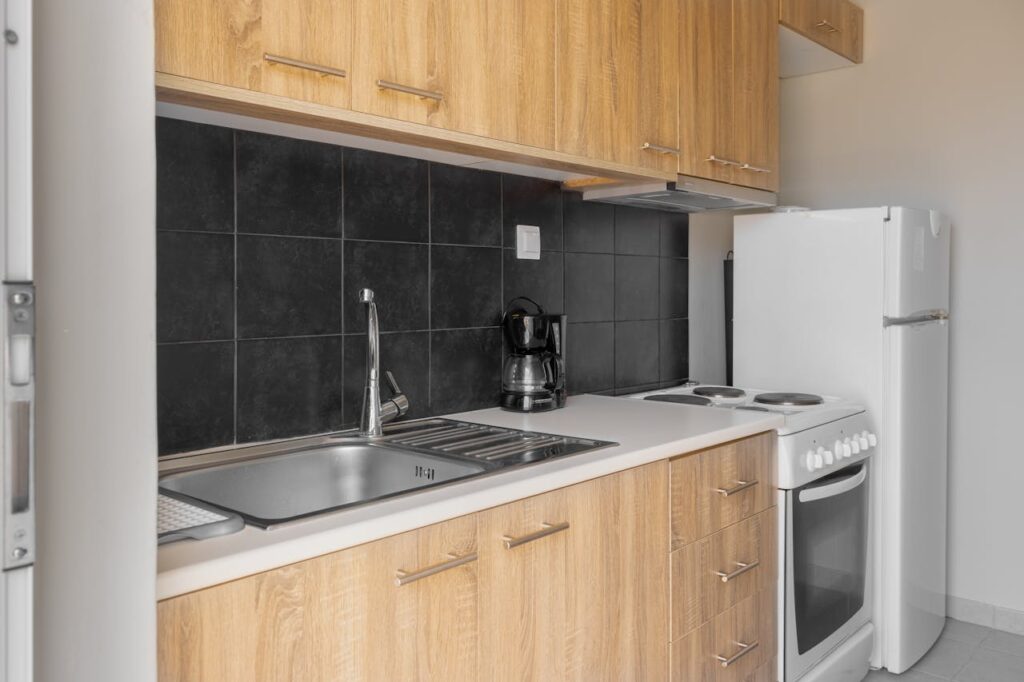
Plywood with a wood veneer is a smart engineered option. It uses layers of wood glued together with a thin layer of real wood on top. This makes it very stable and resistant to warping. It’s also more affordable than solid hardwood.
You can choose from many veneer styles like oak, cherry, or walnut, depending on the look you want. It’s easy to cut with a saw and great for modern kitchens.
- Plywood is made by gluing thin layers of wood together, making it very stable.
- A wood veneer gives it the look of solid wood at a lower cost.
- It works well in custom cabinet designs and is easy to cut with a saw.
- Veneer options include oak, cherry, walnut, and more, giving you lots of style choices.
Conclusion
Choosing the best wood for your kitchen appliance enclosures can make a big difference in how your kitchen looks and works. Strong, attractive wood keeps your appliances safe add your kitchen feeling warm and inviting.
Whether you want something classic like oak or something smooth like maple, there’s a wood out there that fits your needs.
Remember to think about durability, style, and how much work you want to put into building or caring for it. With the right wood, your kitchen will be both beautiful and practical for years to come!
FAQs
1. What is the best wood for kitchen cupboards?
Maple is one of the best choices for kitchen cupboards. It’s hard, smooth, and easy to paint or stain. Oak and birch wood are also popular wood options because they are durable and offer different looks.
2. What is the best wood for kitchen cabinet face frames?
Oak wood is often used for face frames because it’s known for its strength. Maple and hickory also work well if you’re after a high-end, durable and resistant frame that will stand the test of time.
3. What material is best for kitchen cabinet hardware?
Metal is best. Brushed nickel, stainless steel, and brass are popular choices for hardware. They’re strong, easy to clean, and match many kitchen design styles.
4. Is MDF or plywood better for kitchen cabinets?
Plywood is better. It’s much more durable, holds screws well, and resists sagging. MDF is smoother and cheaper, but it’s not as strong in areas like kitchens where moisture is common.
5. Any thoughts on beech wood for cabinetry?
Beech is solid. It’s stable and has a nice creamy color. While not the most popular wood, it holds finishes well and is still durable enough for kitchen use, especially in painted cabinets.
6. Are there better wood options to achieve that substantial, high-quality look and feel?
Yes—walnut, maple, and sawn oak are great for that. These woods have rich textures, natural variation in color, and offer a premium look for quality cabinetry that can elevate your entire kitchen.
7. What are the most popular wood types used in kitchen cabinetry?
Popular choices include maple, oak, cherry wood, and birch wood. These species of wood are known for lasting quality, a variety of finishes, and strength that passes the test of time.
8. Is cherry wood good for kitchen cabinets?
Yes, cherry wood cabinets offer a rich, warm tone that darkens beautifully over time. It’s a go-to for traditional or transitional kitchens, though it can be an expensive wood compared to others.
9. What should I look for when choosing a wood for cabinets?
Look at strength, grain, and cost. When choosing a wood, consider wood that matches your style, stands up to wear, and fits your budget. Also think about the wood grain and how it takes stain.
10. Are softwood cabinets good for the kitchen?
Not always. Softwood can dent or scratch easily, so it may not stand up to daily use. But some softwoods like alder or poplar are still durable enough for painted or custom cabinetry projects.
11. What type of wood is best for a modern look?
Maple or birch is great for a modern look. They have a clean, fine grain and can be stained or painted easily. Both work well in shaker cabinets or custom kitchen layouts.
12. How does natural variation in color affect cabinets?
It adds character. Some species of wood like hickory or walnut show a lot of variation in color, from light blonde to dark brown. This creates a unique, natural style that many people love.
13. How does wood quality affect kitchen remodels?
Better wood lasts longer. High-quality wood cabinets may cost more up front, but they hold up during a kitchen remodel and reduce the need for repairs or replacement later.
14. Are oak cabinets still a good choice today?
Yes, oak has been a staple in kitchens for decades. It’s strong, affordable, and easy to stain. Red oak gives a bold grain, while white oak is smoother and has a more modern tone.
15. What wood is best for full kitchen cabinet construction?
Hardwoods like maple or oak are best for cabinet construction. They’re strong, resist damage, and are used in cabinetry that’s meant to stand the test of time—even with daily use.

